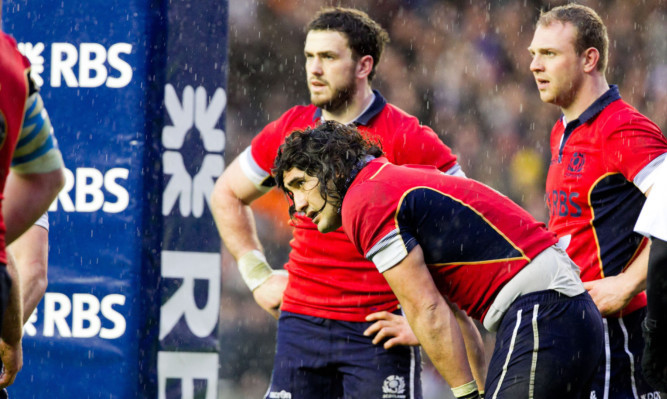
Italy came to Murrayfield to play to avoid the Wooden Spoon at least that is what everyone expected.
After two good performances, but losing ones, Scotland were also in a precarious position at the bottom end of the Championship table. But the manner of the performances gave most folk cause for hope.
As the rain began to pour in the closing stages of the match, so hopes of a Scottish revival drowned in the deluge. Italy won the match with a penalty try on the stroke of the final whistle. It was, without doubt, the worst Scottish performance under Vern Cotter’s leadership.
There may have been endeavour and effort, particularly in the first half but there was also naivety and indiscipline which ultimately cost them and probably consigns Scotland to the Wooden Spoon.
Scotland had a wonderful propensity to shoot themselves in the foot at times, particularly through indiscipline.
Immediately after Mark Bennett scored his interception try, Scotland failed to secure the ball and put pressure back on Italy, who would have been rocked at that point.
Instead, the home team conceded a lineout and Italy scored points margin halved and no pressure exerted for more than 20 seconds.
It was unforgiveable, particularly when for a second time the Scots conceded a penalty straight after scoring one of their own.
What was most concerning was the complete loss of shape in the second half of the game. The Scots had plenty of possession, but were very lateral in attack and made life very easy for the Italian defence, which was outstanding.
While Peter Horne did a reasonable job he is not the dominant personality that Finn Russell is, organising and communicating what he wants to do.
This showed because the Scottish attack was toothless and rarely threatened. It looked like a Scottish team of two or three years ago bereft of ideas. It was not the same team that played against France and Wales.
It was also frustrating that Scotland had not worked out how to counter the Italian forwards.
Italy’s gameplan is hardly a secret yet at times Scotland were taken to the cleaners.
The penalty try was the final nail in the coffin it felt as though it was going to come and perhaps should have done minutes earlier when Italy were going for the pushover try.
So has the bubble of optimism brought by Vern Cotter finally burst? It certainly feels that way, but the players and coaches have a perfect opportunity to put things right in two weeks’ time against England.
If England win in Dublin today, that task will be even tougher.
There will undoubtedly be some very tough conversations going on over the next fortnight and rightly so after yesterday’s performance at Murrayfield because it just wasn’t good enough.

Enjoy the convenience of having The Sunday Post delivered as a digital ePaper straight to your smartphone, tablet or computer.
Subscribe for only £5.49 a month and enjoy all the benefits of the printed paper as a digital replica.
Subscribe